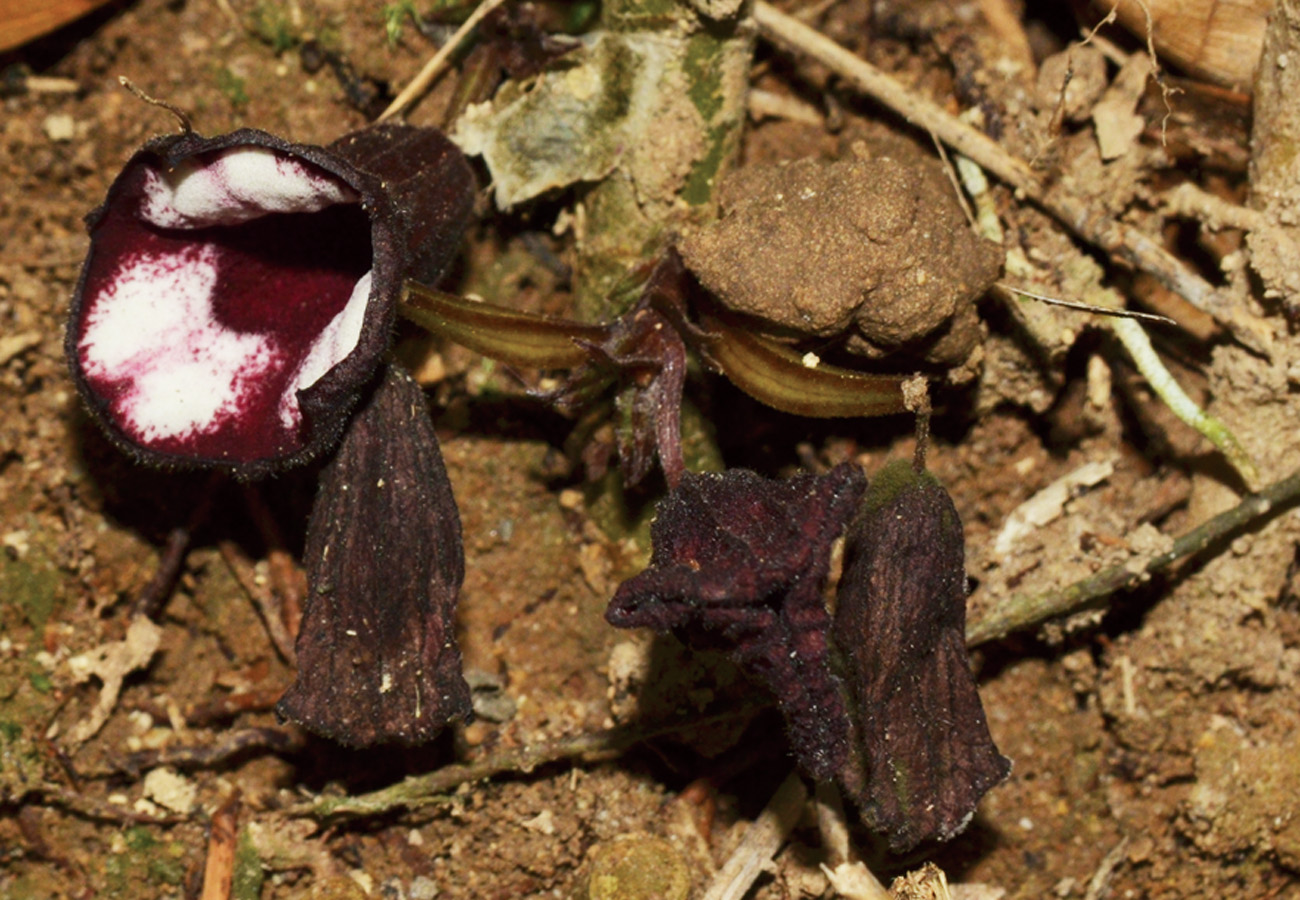Abstract
Thottea aroangensis T.A. Le, D. Dien & Tagane (Aristolochiaceae) is described based on the specimen collected from the A Roang commune, A Luoi district, Thua Thien Hue province, central Vietnam. This species is characterized by subshrub habit 70–90 cm tall, inflorescence at base of stem close to ground level, campanulate and obscurely lobed perianth ca. 2.6 cm long, inside of perianth tube with creamy white patches, and 20 stamens in 2 whorls, by which combination it is clearly distinguished from the other species of Thottea in Vietnam and its surrounding countries. Morphological descriptions, photographs, a distribution map, vernacular name, and preliminary conservation status are provided for T. aroangensis.
References
Hô, P.H. (1999) Cay Co Viet Nam: An Illustrated Flora of Vietnam, vol. 1. Published by the author, Montreal.
Hou, D. (1981) Florae Malesianae Praecursores LXII on the genus Thottea (Aristolochiaceae). Blumea 27: 301–321.
Huang, S.M., Kelly, L.M. & Gilbert, M.G. (2003) Aristolochiaceae. In: Wu, Z.Y. & Peter, H.R. (Eds.) Flora of China, vol. 5. Science Press Beijing, and Missouri Botanical Garden Press, St. Louis, pp. 246–269.
Huyen, D.D. (2005) One new species of the genus Thottea Rottb. (Aristolochiaceae Juss.) for the flora of Vietnam. Academia Journal of Biology 27(4): 43–45. https://doi.org/10.15625/0866-7160/v27n4.5285
IUCN (2012) IUCN Red List Categories and Criteria: version 3.1, second edition. IUCN: Gland and Cambridge.
Kumar, E.S.S., Khan, A.E.S. & Binu S. (2000) A new species of Thottea Rottb. (Aristolochiaceae) from Kerala, South India. Rheeda 10(2): 117–120.
Loureiro, J. (1790) Flora Cochinchinensis, vol. 2. Ulyssipone, Lisbon.
Merrill, E.D. & Chun, W.Y. (1935) Additions to our knowledge of the Hainan flora, II. Sunyatsenia 2 (3–4): 203–332.
Muragan, C. (2011). A review of the genus Thottea (Aristolochiaceae) from the Andaman and Nicobar Islands, including a new record for India. Rheedea 21(2): 149–152.
Mustaqim, W.A. & Putra, H.F. (2020). Thottea tapanuliensis (Aristolochiaceae): a new species from Sumatra, Indonesia. Telopea 23: 163–168. https://doi.org/10.7751/telopea14535
Phan, K.L., Nguyen, T.H., Nguyen Q.H., Averyanov, L.V. & Nguyen, S.K. (2009) New records of genera and species for the flora of Vietnam. Proceedings of the 3rd National Scientific Conference on Ecology and Biological Resources: 200–206.
Phuphathanaphong, L. (1987) Aristolochiaceae. In: Smitinand, T. & Larsen, K. (Eds.) Flora of Thailand, vol. 5. The Forest Herbarium, Royal Department, Bangkok, pp 1–31.
POWO. (2019) Plants of the World Online. Facilitated by the Royal Botanic Gardens, Kew. Published on the Internet; http://www.plantsoftheworldonline.org/ [Accessed on 24 May 2021]
Rottbøll, C.F. (1783) Beskrivelse over nogle planter fra de Malebariske Kyster. Nye Samling af det Kongelige Danske Videnskabers Selskabs Skrifter 2: 525–546.
Sivarajan, V.V. (1985) A new species of Thottea (Aristolochiaceae) from India. Plant Systematics and Evolution 150: 201–204. https://doi.org/10.1007/BF00984196
Sunil, C.N. & Vannaratta, N.K. (2014). Thottea adichilthottiana (Aristolochiaceae), a new species from Ernakulam, Western Ghats, India. Webbia 69(2): 239–242. https://doi.org/10.1080/00837792.2014.951205
Tagane, S., Souladeth, P., Rueangruea, S., Okabe, N., Zhang, M., Chayer, S., Yang, C.-J. & Yahara, T. (2017) Flora of Nam Kading National Protected Area II: 30 new records of angiosperms for Laos. Edinburgh Journal of Botany 75: 107–116. https://doi.org/10.1017/S0960428617000361
Yao, T.L. (2013) Nine new species of Thottea (Aristolochiaceae) in Peninsular Malaysia and Singapore, with two taxa in Peninsular Malaysia redefined and a taxon lectotypified. Blumea 58: 245–262. https://doi.org/10.3767/000651913X675791
Yao, T.L. (2015) Aristolochiaceae. In: Kiew, R., Chung, R.C.K., Saw, L.G. & Soepadmo, E. (Eds.) Flora of Peninsular Malaysia, vol. 5. Forest Research Institute Malaysia, Kepong, pp. 5–46.


